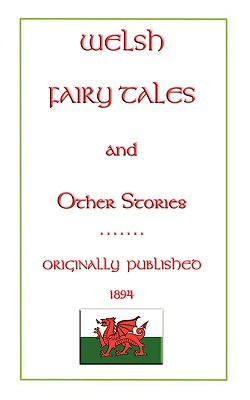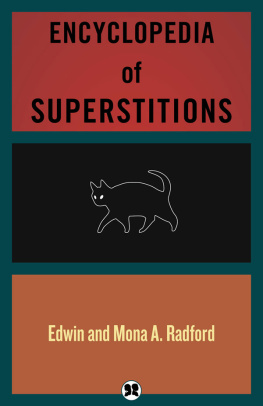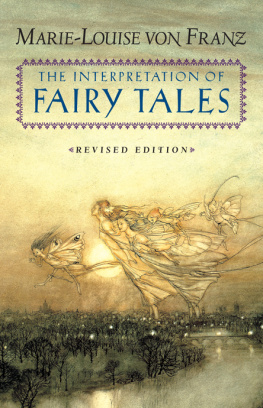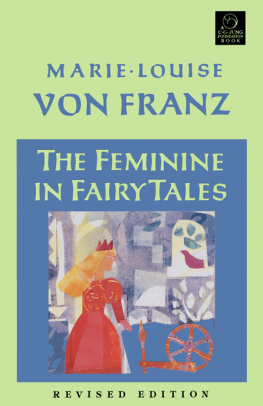Footnotes
Campbell, vol. i. pp. xii. xiv. lvii.
Luzel, "Veilles," passim.
Introduction to Romero, p. x.; Arnaudin, p. 5.
Thomas Ady, "A Candle in the Dark" (1656) (Cf. Aubrey, "Remaine,," p. 67); "Gesta Romanonim," Introd., p. xxv. (E.E.T.S,); Lacroix, p. 100
Pitr, vol. iv. p. xvii.
"Wide-awake Stories," p. 1; Knowles, p. ix.
White, vol. i. p. vi.; Sir G. Grey, p. vii.; Gill, p. xx.; Rink, pp. 83, 85
Ellis, "History of Madagascar," vol I. p. 264; Sproat, "Scenes and Studies of Savage Life," p. 51; Im Thurn, pp. 215, 216.
Temple, "Legends of the Panjab," vol. i. p. v.; Thorburn, p. 172; Leland, p. 12 Taylor, p. 306; "Beowulf," lay 16; Tacitus, "Germania," cc., 2, 3; "Ancient Laws and Institutions of Wales" (Public Record Commission, 1841), pp. 15, 35, &c.
Burton, "Nights," vol. x. p. 163; "Revue des Trad. Pop." vol. iv. p. 6. In Greece and Albania, however, the viol would seem not to be used. Women are the chief reciters. Von Hahn, vol. i. p. ix.
Spitta Bey, p. viii.
Steere, pp. V., vii.
Rink, p. 85; Grimm, "Mrchen," p. vii.
I have not thought it necessary to illustrate at length the characteristics of savage thought enumerated above. They are exhaustively discussed by Dr. Tylor in "Primitive Culture," Sir John Lubbock in "The Origin of Civilization," Mr. Andrew Lang in "Myth Ritual and Religion," and some of them by Mr. J. G. Frazer in "Totemism," and more recently in "The Golden Bough," published since these pages were written.
"Y Cymmrodor," vol. v. p. 70, translated from "Y Brython," vol, iv. p. 251.
Poestion, p. 111; Grimm, "Teut. Myth." p. 457, note, quoting at length the declaration from Hlpher, "Samlingen om Jmtland." A translation will be found in Keightley, p. 122.
Meier, p. 59.
Thorpe, vol. ii. p. 128, from Thiele, "Danmark's Folkesagn"; Keightley, p. 506.
Waldron, p. 28.
"Mlusine," vol. i. p. 446; Radloff, vol. i. p. 78; Blad vol. 1. p. 161; Cosquin, vol. ii. p. 10; Cavallius, p. 281; "Revue des Trad. Pop." vol. iv. p. 222.
Child, vol. i. p. 319; "Thomas of Erceldoune," p. ii (Cambridge Text); Saxo, "Gesta Dan." l. viii.
Journal of Anthrop. Inst. vol. x. p. 282; Shortland, p. 150; "Kalewala," rune xvi. l. 293.
Gill, p. 172.
Keightley, p. 261; Kuhn mid Schwartz, p. 93.
Jahn, p. 72; Keightley, p. 275, quoting Mller, "Bilder und Sagen aus der Schweiz," p. 119; Birlinger, "Volksthmliches," vol. i. p. 42; Kuhn, p. 82; Thorpe, vol. ii. p. 128; vol iii. p. 54, quoting Mullenlioff, "Sagen, &c., der Herzogthmer Schleswig, Holstein und Lauenburg"; Kuhn und Schwartz, p. 173; Wratislaw, p. 40; Wenzig, p. 198; Liebrecht, p. 100, citing "Resuitsof a Tourin Dardistan," part iii. p.3.
Kennedy, p. 106; Thorpe, vol. ii. p. 130, quoting Thiele, "Danmark's Folkesagn."
Jahn, p. 64; cf p. 74, where there are two maidens, one of whom had saved the toad when the other desired to kill it. They stand sponsors for the fairy child, and are rewarded with sweepings which turn to gold; also Bartsch, vol. i. p. 50, where a sword is suspended.
Meier, p. 69; Muller, p. 140; "N. and Q.," 7th ser. vol. v. p. 501.
Pitr, vol. v. p. 23. The story in its present form does not say that the human food enabled the lady to return from Fairyland, but only that it saved her life. Probably, however, an earlier version may have shown the incident in a more primitive form.
Bent, p. 46.
Keightley, p. 388, citing Stewart; Thorpe, vol. iii. p. 50 et seq., quoting Mllenhoff and Thiele; Grohmann, p. 145; see also Thorpe, vol. III. P. 51.
Poestion, p. 119.
Mrs. Bray, vol i. p. 174.
"Revue Celtique," vol. i. p. 231; Keightley, p. 312, citing "The Local Historian's Table-Book," by M. A. Richardson. Cromek, p. 242; "Y Cymmrodor," vol. iv. p. 209; "Revue des Trad. Pop." vol. iii. p. 426; "Revue Celtique," vol. i. p. 232.
Sbillot, "Contes," vol. II. p. 34 "Revue des Trad. Pop." vol. III. p. 428; Sbillot, "Litt. Orale," p. 2!; Kennedy, p. 106; Keightley, p. 311; "Y Cymmrodor," vol. vi. p. 166; Wirt Sikes, p. 87. This story purports to be quoted from Howells, p. 349--an impossible reference, seeing 'that the volume in question only contains 194 pages. The peculiarities of Mr. Sikes' authorities, however, need very little comment.
"Y Cymmrodor," vol. vi. p. 194 Hunt, p. 120.
Gerv. Tilb. Dec. iii. c. 85.
Sbilot, "Contes," vol. ii. p. 42; "Litt. Orale," p. 23; "Trad. et Super." p. 109. But in these cases the operation was performed painlessly enough, for the victims were unaware of their loss until they came to look in the glass. In one of Prof. Rhys' stories the eye is pricked with a green rush; "Y Cymmrodor," vol. vi. p. 178 Hunt, p. 83. See also Sbillot, "Contes," vol. i. p. 119.
Keightley, p. 310; "Revue des Trad. Pop." vol. iii. p. 426 Thorpe, vol. ii. p. 129, quoting Thiele. In another Danish tale given on the same page, the woman's blindness is attributed to her having divulged what she had seen in Fairyland.
Sbillot, "Litt. Orale," p. 24.
"Choice Notes," p. 170; Thorpe, vol. iii. p. 8. The latter form of the story seems more usual., See Gredt, pp. 28, 29, where we are plainly told that the hapless mortals are fetched away by the devil.
Sternberg, p. 132 (see also Thorpe, vol. ii. p. 52); Von Alpenburg, p. 63. See a similar story in Grimm, "Teut. Myth." p. 276, from Brner, "Folk-tales of the Orlagau." In the latter case, however, the punishment seems to have been inflicted for jeering.
Jahn, p. 177, quoting Temme, "Volkssagen "; Ovid, "Metam." l. iii. fab. 3; Tacitus, "Germ." c. 40.
Roger of Wendover, "Flowers of History," sub anno 1057. I quote from Dr. Giles' translation.
See his Presidential Address to the Warwickshire Naturalists' and Archaeologists' Field Club 1886.
MS. marked D. This entry is an interpolation in a list of mayors and sheriffs in a different handwriting. There are several such interpolations in the volume. Coventry possesses a number of MS. volumes of annals, one of which (see below) seems to date from the latter part of the sixteenth century, and the rest from the latter part of the seventeenth. In the MS. marked F. (considered by Mr. W. G. Fretton, F.S.A., to be in the handwriting of John Tipper, of Bablake, Coventry, a schoolmaster and local antiquary at the end of the seventeenth and beginning of the eighteenth centuries), and also in the MS. in the British Museum (Additional MSS. 11,364), the entry runs simply:--"1678 Michaell Earle (Mercer) Mayor; Francis Clark, George Allatt, Sherriffs. This year ye severall Companies had new streamers, and attended ye Mayor to proclaim y' faire, and each company cloathed one boy or two to augment ye show." The latter MS. elsewhere speaks of the story of Godiva's ride as "comonly known, and yearly comemorated by the Mayor, Aldermen, and ye severall companies."
This statue used to be decked out on the occasion of the procession in the long peruke and neckcloth of the reign of Charles II. See T. Ward, "Collections for the Continuation of Dugdale's Antiquities of Warwicksbire" (2 vols., fol. MS., Brit. Mus., Additional MSS., Nos. 29, 264, 29,265), vol. ii. fol. 143.
MS. marked E, Coventry, seventeenth century. A careful examination of the language of Roger of Wendover, Matthew Paris, John of Brompton, and Matthew of Westminster, shows that Roger of Wendover's account is the source of the other three, Matthew Paris copying most closely, and John of Brompton most freely. John of Brompton and Matthew of Westminster omit the escort. Their state. meat as to Godiva's being unseen refers to the hair which covered her; and the latter informs us, with a touch of rhetoric, that Leofric regarded it as a miracle.
Rudder, p. 307. The Rev. W. Taprell Allen, M.A., Vicar of St. Briavels, has been kind enough to supply me with the correction from local inquiries and intimate acquaintance with the traditions and affairs of the parish extending over many years. See also "Gent. Mag. Lib. (Manners and Customs), p. 230.








